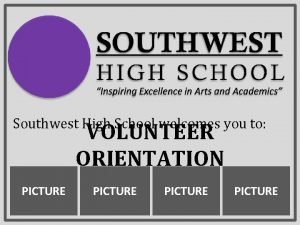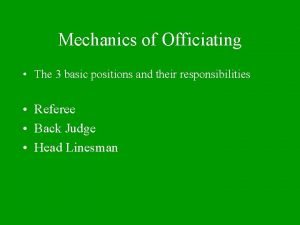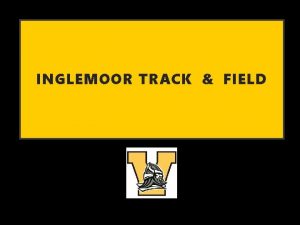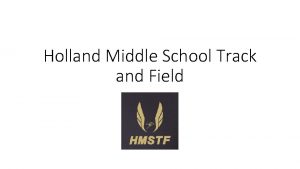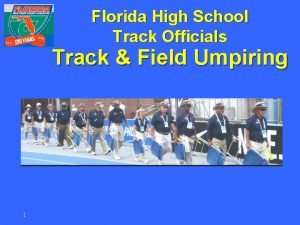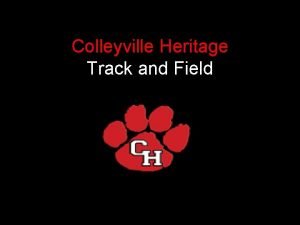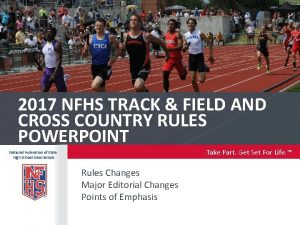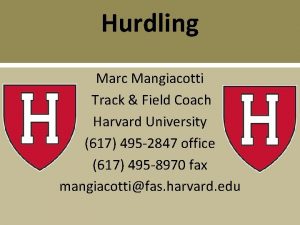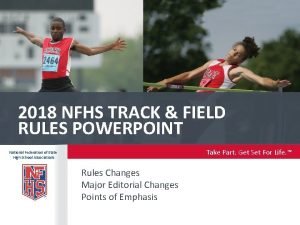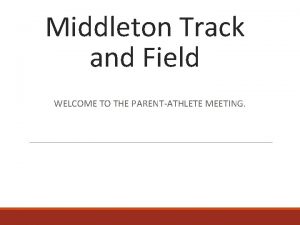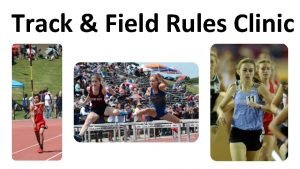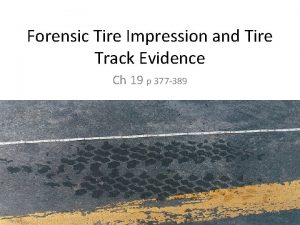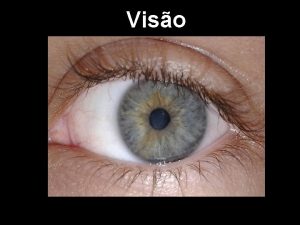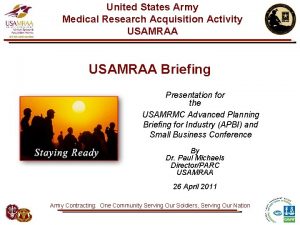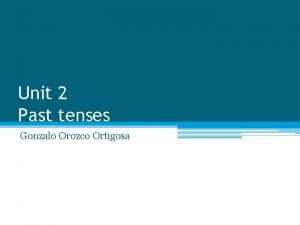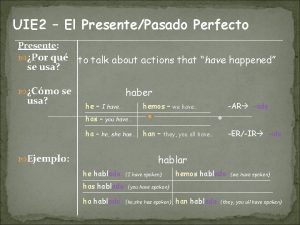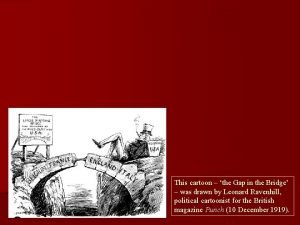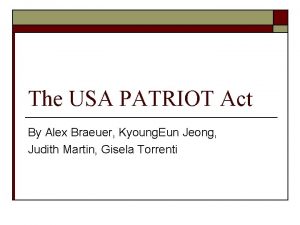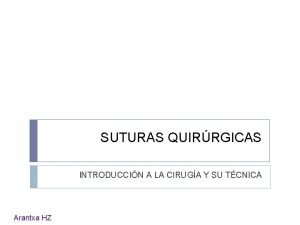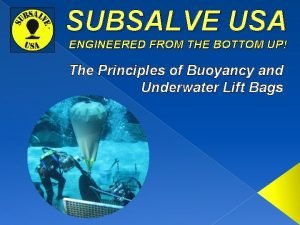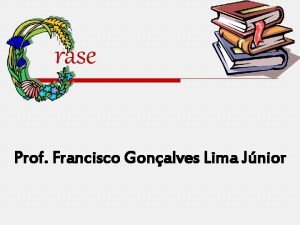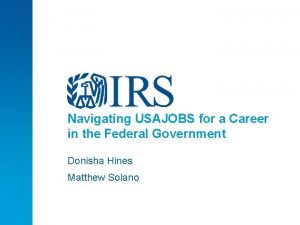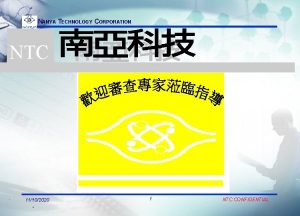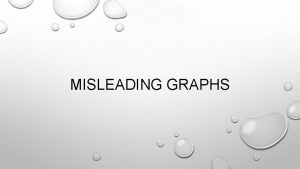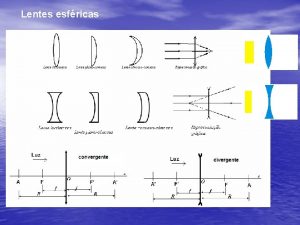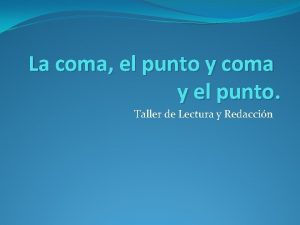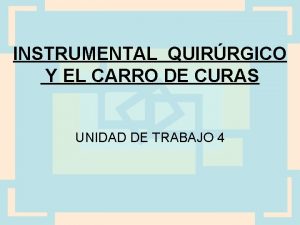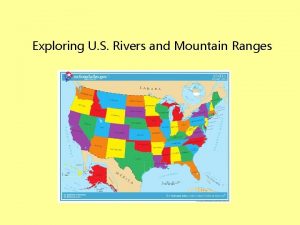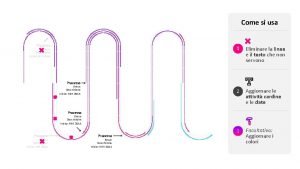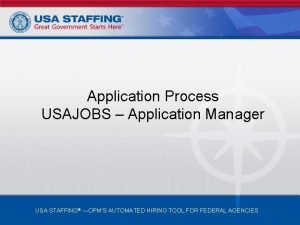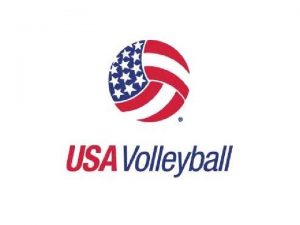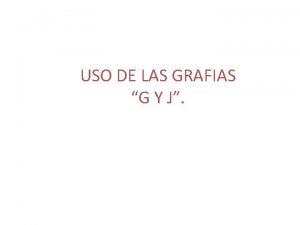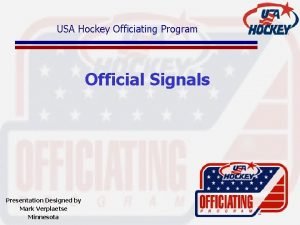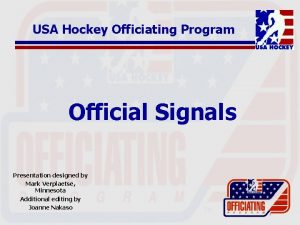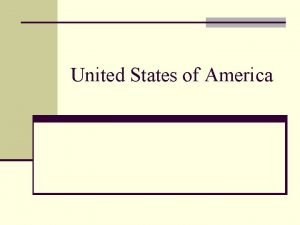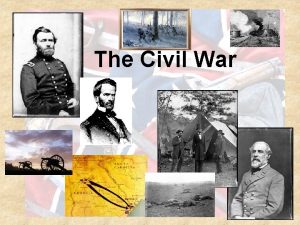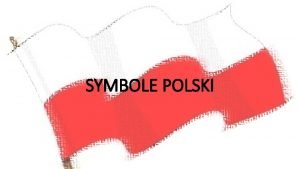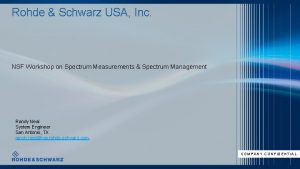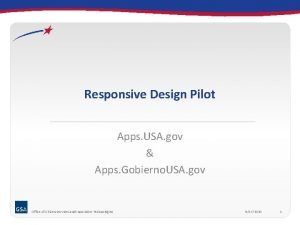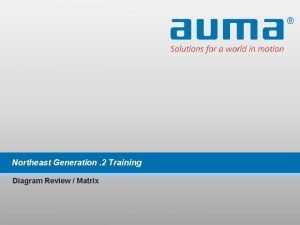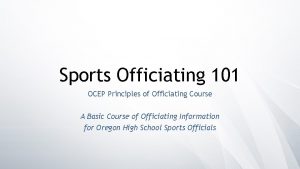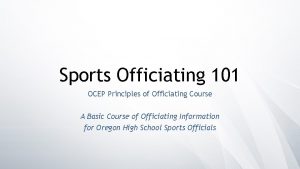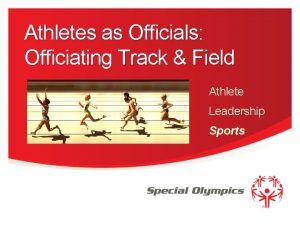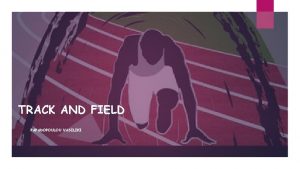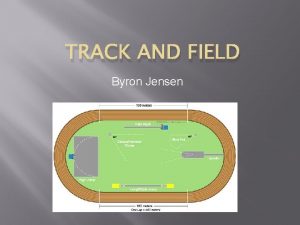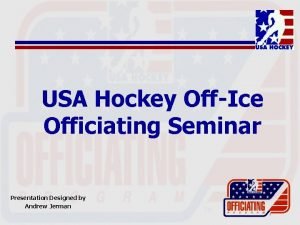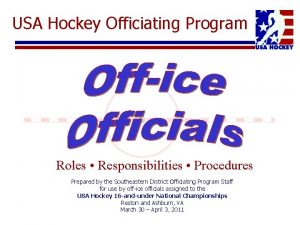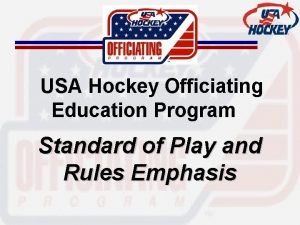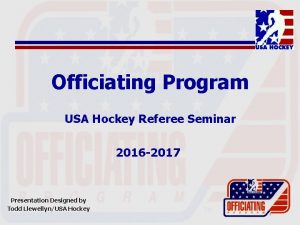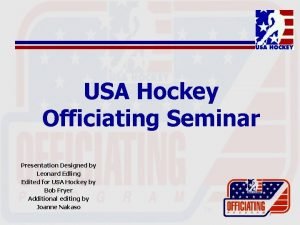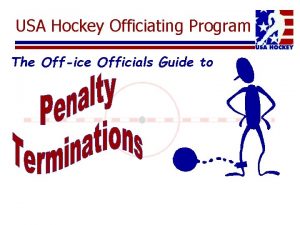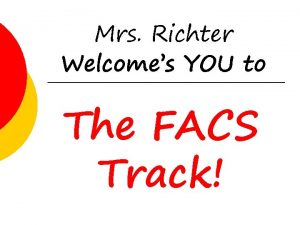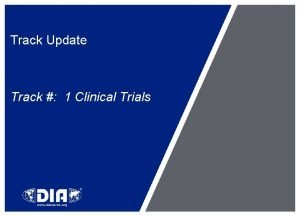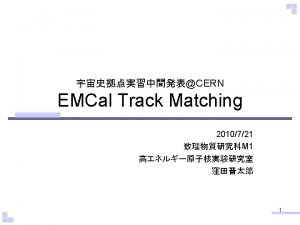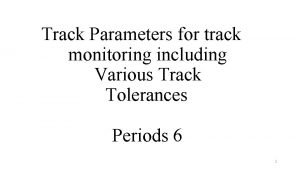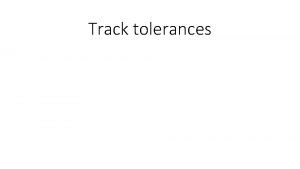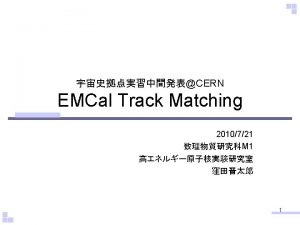USA Track Field Welcomes You to Officiating Track































































































- Slides: 95

USA Track & Field Welcomes You to Officiating Track & Field Courtesy of Finish. Lynx Ò USATF National Track & Field Officials Committee Adapted from presentation prepared by Lawrie G. Robertson, Peter J. L. Thompson and Eric D. Zemper, Ph. D. © USATF National Officials Committee 2000 -2004

Clinic Goals • Promote an “athlete-centered” philosophy of officiating • Identify effective officiating techniques • Gain new skills and insights • Understand key differences in rules • Develop a proactive approach to ensure fairness • Vision of an ongoing process necessary to develop skills & experience • To keep this volunteer activity fun © USATF National Officials Committee 2000 -2004

Track & Field Acronyms • NFSHSA • NCAA • USATF • IAAF National Federation of State High School Associations National Collegiate Athletic Association USA Track & Field International Association of Athletics Federations In the U. S. there are four different rule books we deal with, one from each of the above organizations © USATF National Officials Committee 2000 -2004

Certification Levels New officials will start at the Apprentice level. We've designed the Apprentice level so that new officials can spend time learning a number of events and being exposed to many different areas of track & field. We want to make sure that we're doing all we can going forward to train well rounded officials

Certification Levels Moving up in levels requires • 2 years at previous level • Work minimum number meets at previous level • Written recommendations from officials you have worked with • Test

USA Track and Field Code of Conduct for Officials

The Golden Rule for Track Officials: No athlete should be allowed to gain an unfair advantage, and no athlete should have to suffer an unfair disadvantage. © USATF National Officials Committee 2002 -2004

What Is an “Athlete-Centered” Officiating Philosophy ? • Proper application of rules to situation – Fairness – Objectivity – Impartiality • Reports observations, never affects the competition • Consistent and clear communications • Positive proactive approach (including preventive officiating) • Professionalism, integrity and teamwork © USATF National Officials Committee 2000 -2004

An Effective Official Is : • • Knowledgeable Systematic and aware Caring, but firm and consistent Congenial, but impartial Calm and composed Well groomed in appropriate uniform “Invisible” Able to see officiating as art and science © USATF National Officials Committee 2000 -2004

The Primary Concern at All Times for all Officials is: SAFETY! © USATF National Officials Committee 2002 -2004

Self-evaluation Check for Officials If you can leave the meet unnoticed, your job has been well done. (The attention should always be on the athletes. ) © USATF National Officials Committee 2002 -2004

An Effective Official is Prepared Heat – Sunscreen – Hat – Water or cool drink Cold – – Gloves and hand warmer Waterproofs and hat Boots Water or warm drink Snack “A comfortable official is an effective official” © USATF National Officials Committee 2000 -2004

Event Planning and Management © USATF National Officials Committee 2000 -2004

Organization of Meet Personnel Meet Director Jury of Appeals Track Referee Field Referee Race Walk Referee Starter Chief Clerk Chief Finish Judge Chief Umpire Chief Field Judge © USATF National Officials Committee 2000 -2004

Meet Director and Games Committee • Coordinate subcommittees • Promote event and secure sponsors • Process entries and prepare event sheets • Recruit sufficient officials • Secure needed equipment • Prepare facility for competitions • Record & distribute results Role of the Referee • • • Overall responsibility for the meet Supervises all chief officials Reviews reports of officials concerning possible violations and takes action May reschedule or add events in consultation with the Meet Director Serves as a non-voting member of the Jury of Appeals © USATF National Officials Committee 2000 -2004

Officiating Track Events Keeping the Meet on Schedule Announcer + Clerk + Starter + Finish Area © USATF National Officials Committee 2000 -2004

Clerk of the Course Duties • • • Know the facility (starting line locations and markings) Assign competitors to heats and lanes Provide starting and advancing instructions Issue hip numbers Proactively checks uniforms Gather, hold, escort and place in lanes Anticipate and resolve challenges Attend to keeping the meet on schedule Remain calm and organized © USATF National Officials Committee 1999 -2004

Assigning Heats and Lanes Trials Serpentining (Example of 3 Heats) Fastest Slowest 1 -2 -3 -4 -5 -6 -7 -8 -9 -10 -11 -12 -13 -14 -15 -16 -17 -18 -19 -20 -21 Competitors advance by taking places 1 - 4 from each heat plus 4 fastest times from all heats = 16 to semi-final © USATF National Officials Committee 1999 -2004

Assigning Heats and Lanes Semi-final Rounds Selecting Semi-Finalists Serpentining by Place & Time Establishing Lanes Random “Double Draw” © USATF National Officials Committee 1999 -2004

Assigning Heats and Lanes Final • Qualify for the finals by taking the first 4 placers from each heat • Draw lanes by lot assigning 4 fastest finishers in lanes 3, 4, 5, and 6; the 4 slowest in lanes 1, 2, 7, and 8 Note: High School events randomly assign lanes in pairs © USATF National Officials Committee 1999 -2004

The Starter © USATF National Officials Committee 2000 -2004

Qualities of a Good Starter • • • Is knowledgeable and decisive Provides brief, concise instructions Is firm, patient and fair Possesses common sense and tact Creates/maintains calm atmosphere at the starting line Keeps meet on schedule Shares leadership tasks - delegates Works as part of a team Keeps the focus on athletes © USATF National Officials Committee 2000 -2004

Position of Starter and Recall © USATF National Officials Committee 2000 -2004

Position of Starter 800 m and Longer Step Up Line Start Line © USATF National Officials Committee 1999 -2004

False Start Rules © USATF National Officials Committee 2003 -2004

UMPIRES • “The eyes and ears of the Referee” Observe & report. • Umpires do not disqualify athletes; they report what they see to the Referee (and the Referee makes the decision). • If you see an infraction, raise the yellow flag and stay at your position until the Referee (or Chief Umpire) comes to you. • Be prepared to give a full (written) description of who did what to whom and when (get their competition number). • If you’re not sure, don’t make the call. • If you see a situation you know is not a foul, but there may be a question, write a report to pass on to the Referee. © USATF National Officials Committee 2000 -2004

Umpiring Minimum of 4 required - to cover curves, straights and relay exchange zones How would you prioritize: if you have 4, 8, or 12 Umpires? © USATF National Officials Committee 1999 -2004

Observe & Report Possible Violations • Impeding or jostling • Illegal hurdling – dragging or intentional knocking down • Unfair assistance or contact • Exchanging the baton beyond the relay exchange zone • Failing to run in a direct line on final straight • Running on or over inside lane line on a curve © USATF National Officials Committee 1999 -2004

Umpire Tasks Observe for and report if competitor fails to clear the horizontal plane of a hurdle or intentionally knocking down a hurdle © USATF National Officials Committee 1999 -2004

Steeple Chase Barrier Clearance Methods Steeplers have a requirement common to short hurdle races: they must clear the top of each vertical obstacle (on-track hurdles and water jump barrier) and not trail a foot or leg "below the horizontal plane" of those obstacles. Runners must also "go over or through the water. " Failure of clearance requirements can result in disqualification. Runners can clear obstacles by hurdling, placing a foot atop the obstacle, or vaulting with the use of hands. © USATF National Officials Committee 1999 -2004

Relay Passes Baton Must Be Within the Zone end of zone © USATF National Officials Committee 1999 -2004

The Finish © USATF National Officials Committee 1999 -2004

Competitors Timed and Placed to Near Edge of Finish Line Near Edge Direction of Athlete © USATF National Officials Committee 1999 -2004

Time/Place Finishers Based on Position of the “Torso” Courtesy of Finish. Lynx Ò Torso = Trunk NOT - head, neck, arms, hands, legs or feet © USATF National Officials Committee 1999 -2000

Fully Automatic Timing - F. A. T. (Courtesy of Finish. Lynx Ò) Courtesy of Finish. Lynx Ò © USATF National Officials Committee 1999 -2004

In Summary • Organize to keep meet on schedule • Work as a team • Use written task descriptions • Secure enough officials to time, place and observe each competitor • Be as “invisible” as possible © USATF National Officials Committee 1999 -2004

Officiating Field Events © USATF National Officials Committee 2000 -2004

Officiating Field Events • Think Safety First! • Administer an organized event – Review rules prior to competition – Provide clear and complete instructions – Inspect all implements and competitors – Assure accurate measurements – Create a fair competition environment • Provide consistent calls: “Up”, “On deck”, “On hold” © USATF National Officials Committee 1999 -2004

Tips for Conducting Safe Competitions • Limit access to jumps and throws areas • HS rules require responsible adult require supervision during warm-ups • Provide adequate time for warm-up, prior to (30 min. ) and between flights (10 min. ) • Closely supervise all warm-up activities • Use calls, rules and assertive leadership © USATF National Officials Committee 1999 -2004

Tips for Conducting Safe Competitions • Practice throws within sectors only • Control access to implements (impound) • Check implements for damage (and for W/M ‘mark of the day’) • Walk all implements back, no tossing © USATF National Officials Committee 1999 -2004

Officiating Field Events Time Limits for Field Events: -- Open -# Remaining Throws/ HJ PV Horiz. J. Greater than 3 USATF/IAAF 1 1 NCAA 1 1 HS 1 1½ -- Combined - Throws/ HJ PV Horiz. J. 1 1 1 ½ 2 -3 Remaining USATF/IAAF NCAA HS 1 1½ 2 3 4 1 1½ 2 1 2 3 1 ½ 3 4 1 Remaining USATF/IAAF NCAA HS 1 1 1 3 5 4 5 6 1 2 3 1 ½ 5 6 Yellow warning flag at ¼ min. remaining for USATF/IAAF, at ½ min. for NCAA Consecutive attempts: generally 2 minutes, 3 minutes for PV © USATF National Officials Committee 1999 -2004

Officiating Horizontal Jumps Approach to Officiating Field Events © USATF National Officials Committee 2000 -2004

Long/Triple Jump Positions Assign the duties for entire event Rotate positions between events Competition requires at least 2 officials: Judge 1 (Head Judge) Call athletes Judge the take-off board Hold tape at right angle to foul line Check and record distances Judge 2 (Pit Judge) Mark break in sand Hold tape’s zero end at break point Prepare pit for next competitor © USATF National Officials Committee 1999 -2004

Preparation - Readying the Competition Area Essential Supplies • Fiberglass tape (20 meters) • Clipboard and Pencils • Stopwatch • Rake and Shovel and Broom • Access to water/hose Readying the Competition Area • Check the board condition and steadiness • Moisten the pit • Turn pit, remove debris • Level pit • Sweep area around pit, clean the runway • Sweep and rake following warm-up period © USATF National Officials Committee 1999 -2004

Long/Triple Jump Sand Break Points Requirement for a Level Pit © USATF National Officials Committee 1999 -2004

Preparation - Wind Gauge • Place the gauge - 20 meters from foul line - 2 meters back from runway - 1. 22 meters above ground • Record the wind reading for every attempt © USATF National Officials Committee 1999 -2004

The Competition Warm-up and Run Through Period • Announce a specific time period allotted for open pit run-through practices • Supervise to maintain a safe pit • Close pit at the predetermined time - cone at board • Level and prepare the pit for the competition • Ensure that no marks are placed on the runway © USATF National Officials Committee 1999 -2004

The Competition Competitor Instructions • End warm-ups five minutes prior to start • Gather all competitors • Review: – – – Applicable rules Any special rules applying to this meet Time limit per attempt (60 sec. ) and calls Procedures for checking out of the event Order of jumps and method for advancing to the final SAMPLE COMPETITOR INSTRUCTIONS “You will place no marks on runway or pit” “You have 1 minute after your name is called to initiate your attempt” “You must exit the pit beyond your mark” “You must check out with the head official before leaving for another event in preliminaries and return promptly” “You may not leave during the finals” © USATF National Officials Committee 1999 -2004

Take-off Board - Foul vs Fair © USATF National Officials Committee 1999 -2004

Typical High School Board © USATF National Officials Committee 1999 -2004

Triple Jump Technique © USATF National Officials Committee 1999 -2004

Elements of a Valid Jump © USATF National Officials Committee 1999 -2004

Types of Violations © USATF National Officials Committee 1999 -2004

The Competition Proper Measurement • Mark closest point of landing to the board • Zero end of the tape is placed on the edge of the break in sand closest to the take-off board • Measure perpendicular to take-off board and parallel to the edge of runway • Announce distance to lesser centimeter, or “foul” as the red flag is raised after attempt is complete © USATF National Officials Committee 1999 -2004

Points of Measurement © USATF National Officials Committee 1999 -2004

The Competition Potential Problem Areas • • Competitors jumping out of order Jumpers checking in, then “disappearing” Unacceptable language, behavior People walking across the runway Safe use and storage of equipment Pit edge visible and surface kept level Officiating crew in the proper positions Conflicts with other events © USATF National Officials Committee 1999 -2004

In Summary • Remove the cone • Make announcing calls: “Up” - “On deck” - “On hold” • Start the clock/watch • Watch the board for legal take-off • Signal “fair” or “foul”/”no mark” after the competitor has exited the pit • Announce clearly, don’t shout © ALLSPORT 1998 © USATF National Officials Committee 1999 -2004

Officiating Vertical Jumps © USATF National Officials Committee 2000 -2004

Vertical Jump Tasks • Preparing area – Set standards and mark their placement – Set and mark the bar – Measure the height of crossbar at standard point • Time limit – 60 seconds (HS PV 90 sec. ) • Clearance • Breaking ties © USATF National Officials Committee 1999 -2004

Pole Vault Area 0. 80 m 0. 40 m Note: PV landing pad requirements are rapidly evolving; check your rule book for current dimensions and padding requirements. HS event not allowed if pad does not meet rule © USATF National Officials Committee 2000 -2004 requirements.

Pole Vault Officiating Positions © USATF National Officials Committee 1999 -2004

High Jump Bar Placement and Measurement © USATF National Officials Committee 1999 -2004

High Jump Observing the Bar © USATF National Officials Committee 1999 -2004

Officiating The throws © USATF National Officials Committee 2000 -2004

Implements Inspection All throwing implements should be weighed and measured prior to the competition Know if they are impounded or marked. © USATF National Officials Committee 1999 -2004

Shot Put, Discus and Hammer Officiating Positions © USATF National Officials Committee 1999 -2004

Shot Put and Discus Considerations Sector Line © USATF National Officials Committee 1999 -2004

Sector - Fair/Foul © USATF National Officials Committee 1999 -2004

Shot Put Circle Fouls © USATF National Officials Committee 1999 -2004

Officiating on the ring or at the Arc © USATF National Officials Committee 1999 -2004

Javelin Throw Measurement 1. Point of contact 2. Tape lies flat 3. The “read” point 4. Tape drawn through the center point © USATF National Officials Committee 1999 -2004

In Review • Think and practice safety - in warm-ups and competition • Consistent communications and practices • Accuracy and athlete-centered © USATF National Officials Committee 1999 -2004

Officiating Long Distance Running and Cross Country © USATF National Officials Committee 2000 -2004

Officiating LDR and Cross Country • Referee/Race Director and Jury • Start – Clerks - check in competitors, set starting positions on start line – arc – Marshals - start line, assembly, pace signs – Starter - standard commands, no count down • Course • Finish – Chute Director – Sorters – Chute Aides – Pullers – Spikers • Timing and Results © USATF National Officials Committee 1999 -2004

Cross Country Course Design • • Umpires Course marshals Split time readers Spectator areas Registration Area Overhead signs Weather protection Start Area • Safe, open, straight area for 600 -800 meters • Arc and boxes for teams in cross country • Assembly line with rope across • Use of predicted pace signs (road races) © USATF National Officials Committee 1999 -2004

On Course Issues • Course considerations: – – – Marking and signage Splits – visual and oral Aid stations – consistent organization First aid and communications Marshaling and guiding • Applicable USATF rules on assistance and why umpires are important • Written procedures and process for major events • Role of the Event Director as Referee (not recommended) © USATF National Officials Committee 1999 -2004

Cross Country Finish Area System For Mass Finishes at Championship Events © USATF National Officials Committee 1999 -2004

Road Race Finish Systems © USATF National Officials Committee 1999 -2004

Results Generation Methods Total field finish times method – Finishers timed at the front of the chute – Tags removed from finishers at end of chute – Issues: “turkeys”, staying in chute, fallen finishers Estimated time method – – All chutes open Interval times taken Time estimators sent down chutes All tags removed © USATF National Officials Committee 1999 -2004

Officiating Race Walking © USATF National Officials Committee 2000 -2004

Rules of Race Walking Technique • Rule # 1 The walker is to maintain continuous contact with the ground • Rule # 2 The walker’s advancing leg is to be straightened from first contact with the ground until the leg is in the vertical upright position © USATF National Officials Committee 1999 -2004

Judging Sectors on Track Race Walk Caution Paddles Loss of Contact Bent knee © USATF National Officials Committee 1999 -2004

Race Walk Judge’s Cards Tally Sheet Chief Judge’s Tally Sheet Warning Card © USATF National Officials Committee 1999 -2004

Officiating Track & Field for Athletes with Disabilities © USATF National Officials Committee 2002 -2004

Officiating Track & Field for Athletes with Disabilities There are six Disabled Sports Organizations promoting T&F for disabled athletes: - Wheelchair Sports, USA - National Disability Sports Alliance (Cerebral Palsy) - Special Olympics - United States Association for Blind Athletes - USA Deaf Track & Field - Disabled Sports USA (Amputee) All base their rules on IAAF and USATF rules, making modifications only as necessary to accommodate the particular needs of the type of disability © USATF National Officials Committee 2002 -2004

Officiating Track & Field for Athletes with Disabilities • While Masters and Youth competitions are grouped by age, disabled competitions are grouped by age and by type and level of disability © USATF National Officials Committee 2002 -2004

Officiating Track & Field for Athletes with Disabilities Examples of rule modifications: • In wheelchair racing, the start and finish are determined by the hub of the front wheel • In wheelchair racing, the relay exchange zones are doubled in length and two lanes are allowed per team • In wheelchair racing, an athlete passing carries the responsibility of ensuring full clearance of the chair being overtaken, and the athlete being passed has the responsibility to not obstruct or impede once the front wheels of the passing athlete are in sight © USATF National Officials Committee 2002 -2004

Officiating Track & Field for Athletes with Disabilities Examples of rule modifications: - When starting races for deaf athletes, the starter must use visual cues such as a flag or a strobe light - Blind athletes are allowed sighted guides in running events, do not have to use a baton in relays (exchange is by touch), and are allowed aural cueing in field events © USATF National Officials Committee 2002 -2004

Officiating Track & Field for Athletes with Disabilities Examples of rule modifications: For all running events, leg amputees must wear prostheses; but…for field events, they can wear them…or not wear them. Field events for wheelchair athletes involve the use of chair tie-downs or a throwing frame (maximum height of the seat is 75 cm) © USATF National Officials Committee 2002 -2004

Officiating Track & Field for Athletes with Disabilities A complete set of rule modifications for each disability group is in a special section of the USATF Rule Book, and in your clinic notebook © USATF National Officials Committee 2002 -2004

Officiating Track & Field for Athletes with Disabilities And… Persons with disabilities can be officials, as well. © USATF National Officials Committee 2004

Resources for Officials

Resources for Officials Rule Books NFHS USATF NCAA IAAF

Next Steps to Certification üCheck for fees made out to: MV USATF ü Complete Application üComplete the rules review (test) Welcomes to Officiating and thanks you for attending today’s course © USATF National Officials Committee 2002 -2004

Acknowledgments ALLSPORT Photographs. 1998 Bakjian, A. Track Management. Track & Field News, Inc. , Los Altos, CA. 1982 Hickman, D. Race Walk Judging Handbook. USATF, Indianapolis, IN. 1991 International Amateur Athletic Federation Technical Committee. Athletics Officiating: A Practical Guide. IAAF, London, UK. 1990 Robertson, L. G. , Kleeman, G. , Thompson, P. J. L. A Guide to Track & Field Officiating. USATF, Indianapolis, Indiana, 1999 Seese, Eddie, Photographs, Personal Record Sports, Vallejo, California, 1999 Zemper, Eric D. , Starters USATF Training Monograph For use by non-profit organizations for athletics officials training purposes only © USATF National Officials Committee 2000 -2004
 Officiating track and field
Officiating track and field Family welcomes you
Family welcomes you Http://www.freetranslation.com/
Http://www.freetranslation.com/ School welcomes you
School welcomes you School welcomes you
School welcomes you School welcomes you
School welcomes you Service of sequence
Service of sequence God welcomes us
God welcomes us Mechanism of officiating
Mechanism of officiating Numbers in basketball
Numbers in basketball 3 person mechanics basketball
3 person mechanics basketball Dead ball officiating in football
Dead ball officiating in football Inglemoor track and field
Inglemoor track and field Holland middle school track and field
Holland middle school track and field Florida high school track and field
Florida high school track and field Barton hundley
Barton hundley Nfhs track and field dimensions
Nfhs track and field dimensions Harvard track and field
Harvard track and field Nfhs track and field rule book
Nfhs track and field rule book Middleton track and field
Middleton track and field Clishina
Clishina Rules of high jump
Rules of high jump Common track and field injuries
Common track and field injuries Magnitude of magnetic force
Magnitude of magnetic force Individual differences factors
Individual differences factors Field dependent vs field independent
Field dependent vs field independent Distinguish between magnetic and nonmagnetic materials
Distinguish between magnetic and nonmagnetic materials Waveguide cutoff frequency
Waveguide cutoff frequency Database field types and field properties
Database field types and field properties Field dependent and field independent
Field dependent and field independent Magnetic field
Magnetic field Tire tracks forensics
Tire tracks forensics You say you love the rain
You say you love the rain Good health is a choice agree or disagree
Good health is a choice agree or disagree If you think you can you can poem
If you think you can you can poem Tell me what you eat and i shall tell you what you are
Tell me what you eat and i shall tell you what you are I will follow wherever you may go
I will follow wherever you may go Winter holidays in usa
Winter holidays in usa Olho perfeito
Olho perfeito Rozloha usa
Rozloha usa Usa mezőgazdasága
Usa mezőgazdasága Us army medical research acquisition activity
Us army medical research acquisition activity Simple past
Simple past Tabla de bonificaciones amway usa
Tabla de bonificaciones amway usa Cuando se usa have y has
Cuando se usa have y has Www usalearns org class
Www usalearns org class What is the message of the gap in the bridge' cartoon
What is the message of the gap in the bridge' cartoon Act definition government
Act definition government Statue of liberty fun facts
Statue of liberty fun facts Sutura tipos
Sutura tipos Subsalve usa
Subsalve usa Turisticky nejpřitažlivější část usa
Turisticky nejpřitažlivější část usa Cuando se usa punto y seguido
Cuando se usa punto y seguido Crase obrigátoria
Crase obrigátoria Verbo to be
Verbo to be Woodfieldpharm steel, llc.usa
Woodfieldpharm steel, llc.usa Ccusa opinie
Ccusa opinie What do tokens do in usatestprep
What do tokens do in usatestprep Petrolink usa
Petrolink usa Usa infotehnoloog 1955-2011
Usa infotehnoloog 1955-2011 Simple past perfect
Simple past perfect Vacancy question responses usajobs
Vacancy question responses usajobs Nanya technology corporation usa
Nanya technology corporation usa Tajneed usa
Tajneed usa Misleading graphs in the news
Misleading graphs in the news Melting pot vs salad
Melting pot vs salad Um escoteiro usa uma lupa para acender uma fogueira
Um escoteiro usa uma lupa para acender uma fogueira Grandi laghi usa
Grandi laghi usa Como se usan las comas
Como se usan las comas Stan na północnym zachodzie usa graniczący z kanadą
Stan na północnym zachodzie usa graniczący z kanadą Rishta nata germany
Rishta nata germany Skills usa emblem
Skills usa emblem Funcion de sonda acanalada
Funcion de sonda acanalada Us literacy rates
Us literacy rates Mountain ranges in usa map
Mountain ranges in usa map Come si usa
Come si usa Distoclusion definition
Distoclusion definition Wochenbericht geographie 9 klasse
Wochenbericht geographie 9 klasse Usa 1787
Usa 1787 Usa staffing application
Usa staffing application Volleyball referee uniforms
Volleyball referee uniforms Seasons in czech republic
Seasons in czech republic Reglas g y j
Reglas g y j Field hockey signals
Field hockey signals Hockey ref penalty signals
Hockey ref penalty signals Geographical position usa
Geographical position usa Csa vs usa
Csa vs usa Symbol czegoś godło
Symbol czegoś godło What makes a sonnet
What makes a sonnet Regiony usa
Regiony usa Rohde & schwarz usa, inc.
Rohde & schwarz usa, inc. Usa.gov apps gallery
Usa.gov apps gallery Physical features of the united states
Physical features of the united states Auma sa07.6 wiring diagram
Auma sa07.6 wiring diagram Nergeco door troubleshooting
Nergeco door troubleshooting Milli mikro nano piko
Milli mikro nano piko



